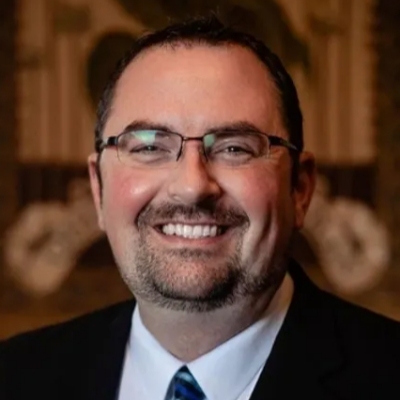“Have you experienced success with intermittent fasting for belly fat loss? What was your fasting schedule, and what’s one tip you’d give to someone starting out?”
Followed a 16:8 schedule — fasting from 8 p.m. to 12 noon the next day

Yes, I’ve had noticeable success using intermittent fasting to reduce belly fat, especially when paired with consistent walking and staying mindful of carbs. I followed a 16:8 schedule — fasting from 8 p.m. to 12 noon the next day, which fit well with my workflow and cut out late-night snacking (a real weakness during guitar product launches and long marketing sprints). The biggest tip I’d offer is: don’t overthink it. Keep your meals simple, whole, and satisfying, and use black coffee or herbal tea in the mornings to help get past hunger pangs early on. I also used the fasting window to focus on deep work — writing ad copy, reviewing analytics — to stay distracted and productive. It’s not a magic fix, but it helped reset my habits. Just be consistent, and your body will catch up.
Xin Zhang, Marketing Director, Guyker
Followed the 16:8 method

Yes, I’ve had success with intermittent fasting for belly fat loss. I followed the 16:8 method, where I fast for 16 hours and eat within an 8-hour window. I typically skip breakfast and have my first meal around noon, finishing my last meal by 8 PM. This schedule worked well for me because it’s sustainable and doesn’t feel restrictive. One tip I’d give someone starting out is to stay hydrated during fasting hours. Drinking water, herbal teas, or black coffee helped curb my hunger and made the process easier. Also, avoid overeating during the eating window—focus on nutrient-dense, whole foods to get the most out of the fast. It’s not about drastic cuts; it’s about consistency and making mindful choices.
Nikita Sherbina, Co-Founder & CEO, AIScreen
16:8 intermittent fasting approach

Working with nonprofit leaders who manage demanding schedules has taught me about sustainable wellness strategies that actually stick. I’ve seen executives successfully use a 16:8 intermittent fasting approach—eating between noon and 8 PM—because it aligns with their natural work rhythms and eliminates decision fatigue around breakfast. The key insight from my clients is that intermittent fasting works best when it supports your mission-driven lifestyle rather than fighting against it. My top tip for beginners: start with a 12-hour eating window and gradually extend the fasting period by 30 minutes each week.
This mirrors how I approach grant writing—you don’t tackle a $500K federal proposal on day one; you build capacity systematically. The nonprofit leaders I work with find that fasting actually improves their focus during morning strategy sessions and board meetings. They report feeling more energetic for donor cultivation events and community engagement activities. The discipline required for intermittent fasting translates directly to the consistency needed for successful fundraising campaigns. That’s how impactful grants fuel mission success.
Wayne Lowry, CEO, Scale By SEO
The 16:8 schedule

Yes, I’ve found intermittent fasting effective for reducing belly fat, primarily using the 16:8 schedule—fasting for 16 hours and eating within an 8-hour window. This approach helped regulate insulin levels and reduce overall calorie intake without feeling deprived. One key tip for beginners is to stay well-hydrated and listen to your body, gradually easing into longer fasts rather than jumping in too quickly. Consistency paired with balanced nutrition during eating windows is crucial for sustainable results. Intermittent fasting isn’t a magic bullet but a practical tool when combined with healthy lifestyle habits.
Amir Husen, Content Writer, SEO Specialist & Associate, ICS Legal
16:8 intermittent fasting schedule

I dropped nearly 8 kilos of belly fat—not by dieting harder, but by organizing my time like I run my business: with clarity and structure.
As the owner of Mexico-City-Private-Driver.com, my daily life revolves around precision—our drivers need to be early, our clients expect discretion, and our service must run like a Swiss watch. I realized I needed the same discipline with my eating habits.
I committed to a 16:8 intermittent fasting schedule, fasting from 8 p.m. to 12 p.m. the next day. At first, it was tough—especially while coordinating morning airport pickups without breakfast. But within 3 weeks, something clicked. I had more focus during the day, less brain fog, and by month two, my clothes fit differently. I wasn’t just losing weight—I was regaining mental clarity that helped me grow the business with more energy.
My biggest tip for anyone starting out: don’t focus on restriction—focus on structure. Treat your eating window like a client appointment. Block the hours. Stick to them. For me, fasting wasn’t about eating less—it was about making fewer decisions in the day and channeling my willpower into my business.
Running a premium transport service in Mexico City demands presence and stamina. Intermittent fasting gave me both.
Martin Weidemann, Owner, Mexico-City-Private-Driver.com
Starting with 16:8 — A Gentle Entry into Intermittent Fasting

The 16:8 method — which means 16 hours of fasting and eating during an 8-hour window — is popular since it’s easier for most people to adopt. It’s often skipping breakfast not eating until noon, and having finished by 6 pm.
This format may also deter late-night overeating and promote more mindful eating patterns throughout the day. Others also say it suits work and social schedules.
Ease in by starting with a 12:12 window and modifying as your body adjusts. If you stay satiated and avoid those extreme hunger pangs, focus on calories in the eating window.


